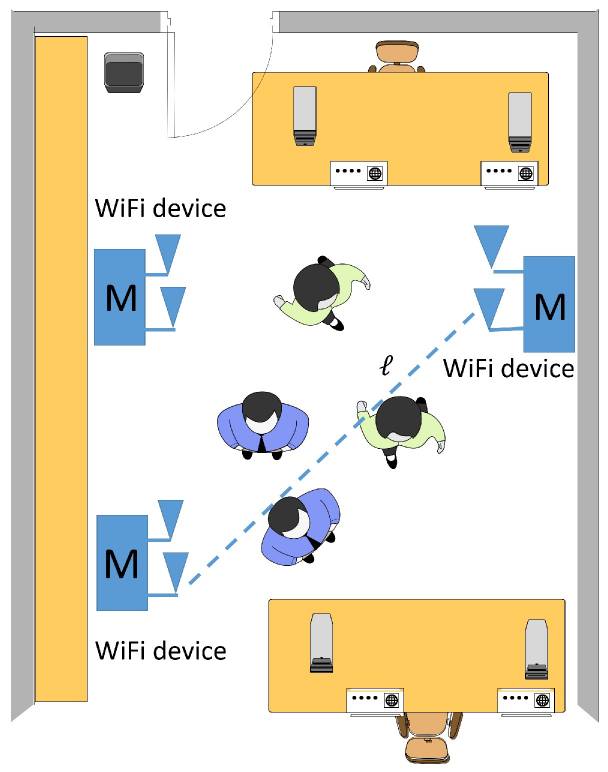Application note
AI Occupancy-Tracking Platform enables Social Distancing
An AI Neural Network platform uses radio CSI (Channel State Information) to provide reliable people detection for COVID restriction compliance in Buildings, Smart Cities and Transportation.

Overview
Occupancy tracking is becoming crucial in many people-centric applications, such as Social Distance regulatory compliance, Crowd Control, Building & Energy Management, Smart Cities and Transportation.
Crowd behaviours are usually unpredictable, which pose many challenges for crowd counting and estimation. Other challenges may include object occlusions and real-time processing requirement.
Classical solutions can be broadly categorized as “image-based” and “non-image-based” methods.
An image-based counting model estimates the crowd density by analyzing the human characteristics in high-resolution images in the pixel, texture,or object level, often achieving a superb detection accuracy.
However, sensitivity to scenario brightness, high computational costs, and privacy concerns are limiting factors that could confine the applicability of such image-based methods.
Bluewind presents here a “non-image-based” solution: an AI-based software platform designed to compute the number of people in indoor environment, providing real-time and accurate estimation of the crowd size.

Solution
During the latest months, the development team at Bluewind explored possible solutions which could help humans in the effort of keeping distance among each other and being compliant with new social norms featuring public spaces.
The answer came from recent discoveries and scientific results in the field of WiFi networks signal processing, Several medical applications exploit the Channel State Information(CSI) of WiFi signals to automate patients monitoring to a degree which enables the spotting of the patient’s breathing rate.
The signal propagated from the transmitter to the receiver is affected by whatever happens in the environment: the amount of data embedded in the CSI is dense, highly dense.
Whether the patient is walking,falling to the ground,suffering from sleep disorder, or asking for help, whether he is calling for help , these are all states which get captured by the signal when a message is transmitted over the WiFi and hence stored in the CSI matrix. Under many aspects, having the CSI is like having a picture of the environment passed through by the WiFi signal.
Technology
CSI-based WiFi sensing can reuse the signal processing techniques and algorithms designed for computer vision tasks. What’s peculiar of CSI-based applications is that they overcome usual limitations affecting camera based ones, since CSI is not affected by light conditions and it enhance higher degrees of privacy. Due to the similarities between CSI matrices and images, learning-based methods are the most accurate and low latency processing techniques available.
Deep neural networks designed with convolution and recurrent cells (CR-Neural Networks) outperform model-based algorithms based on hard coded rules in terms of of noise reduction, efficient feature extraction and model size. This led us to the prototyping of light applications fitting embedded devices with memory and computing power constraints, such as the RPi4 or similar.
At Bluewind labs a framework has been developed for fast communication between two embedded devices to gather CSI matrices in real time for dataset generation. During experiments Bluewind designed a neural network to classify whether a user is sitting at the working station or whether he is outside the room. The same algorithm has been trained to detect the presence of other objects that might be disturbing the WiFi signal and thus modify the CSI fingerprint patterns.
Success Story
This solution demonstrates the huge potentials coming from adapting existing technologies to unexplored fields of applications.
The WiFi signal has been used to track the presence of humans within indoor environments in order to ease social distancing practices.
The technology delivers useful data for other Intelligent buildings applications as well, such as efficient HVAC systems or automated smart lighting.

